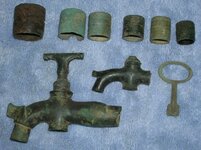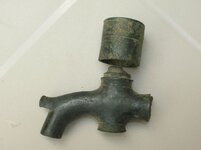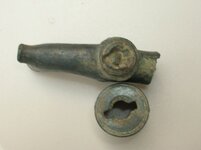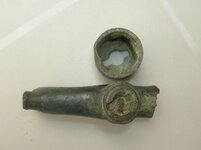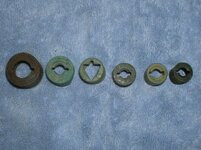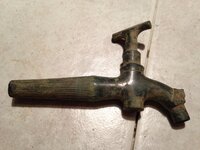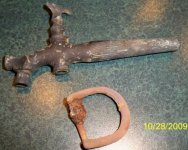FoundInNC
Sr. Member
I dug this beautiful old brass spigot today, or keg tap as they are most well known. I found it at my site that produced 2 capped bust dimes and an 1858 trime. I have also found multiple post colonial flat buttons on this site. You colonial experts please chime in with your opinions on this tap. I am trying to see if there was 1700s activity on this site, and am relying on relics alone as my research. Everybody is welcome to share thoughts! Sorry there are not more pictures of my finds today, but it was sooooo hot, i only hunted for two hours. Is it 18th century or later?
Also, I am experimenting with a new method of "dry cleaning" old brass relics, because i find that the green patina sometimes comes off with water. I think this method keeps brass relics looking much more presentable.

Before cleaning
And after


Also, I am experimenting with a new method of "dry cleaning" old brass relics, because i find that the green patina sometimes comes off with water. I think this method keeps brass relics looking much more presentable.

Before cleaning
And after


Last edited:
Upvote
7


 But cool find.
But cool find.


 and you right NOT to use water, water can actually speed up the process of bronze disease, but try and keep your dug items including coins, damp with the earth they come from.
and you right NOT to use water, water can actually speed up the process of bronze disease, but try and keep your dug items including coins, damp with the earth they come from.

